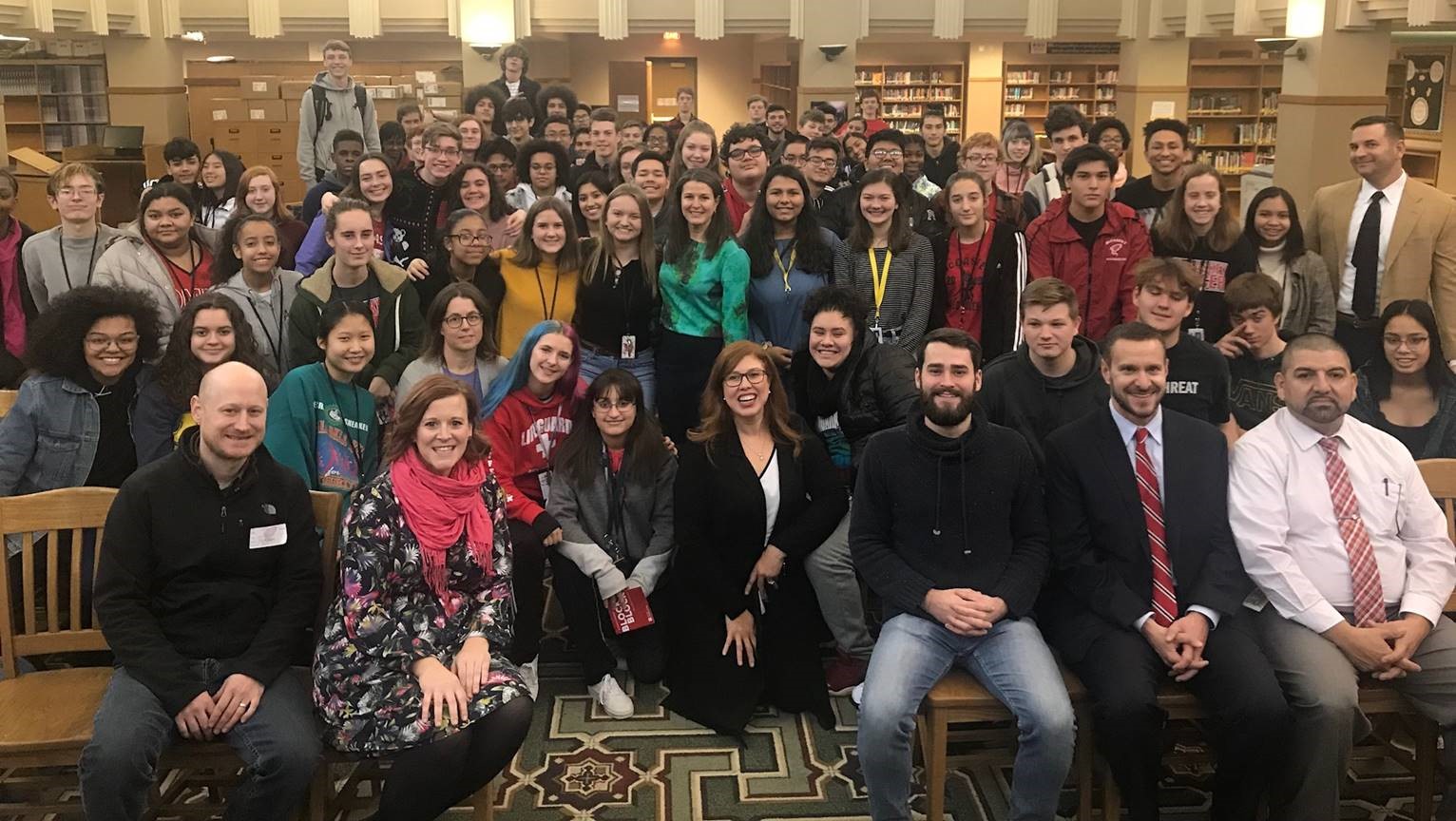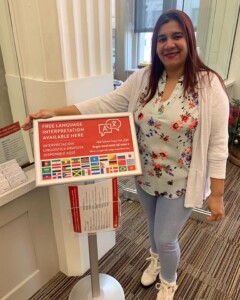
Civic engagement strengthens Lancaster’s welcoming efforts
Lancaster, Pennsylvania has a long history of welcoming that guides the local government’s work to this day.
“We are a city of welcome and have been for hundreds of years,” says Milzy Carrasco, director of Neighborhood Engagement for the City of Lancaster.
Lancaster became Certified Welcoming in 2018 — making the city the first to achieve the designation in Pennsylvania. More recently, in October 2022, Lancaster was recertified to further institutionalize equity and inclusion within the city government.
To learn more about the process of recertification, we talked with Carrasco and Zayra Falu, the language services coordinator in the Department of Neighborhood Engagement. Carrasco and Falu describe three things that make Lancaster’s welcoming work successful: collaboration, a culture of giving, and leadership.
The neighborhood engagement team is especially enthusiastic about building diverse civic leadership within their community. Carrasco shares the story of Ahmed Ahmed, a refugee from Cameroon who came to Lancaster when he was 3 years old. After a lifelong interest in local politics, Ahmed participated in Lancaster’s Neighborhood Leaders Academy in 2021. Equipped with many years of community-based experience and the tools he gained in the academy, he was appointed to fill a vacancy on the city council in December 2022.
“We take great pride in seeing the work that the community is doing,” says Falu. “Certified Welcoming highlights and elevates who we are here in Lancaster.”
Below, Carrasco and Falu share how Certified Welcoming has improved welcoming work in Lancaster and recommendations they have for other communities who want to become certified. The following interview has been edited for clarity and length.
Why did the city of Lancaster commit to becoming recertified?
In 2018, a new administration, new strategic priorities, and residents and constituents were telling us that they wanted to create a more accessible way to communicate with local government. As the administration started to build its strategic priorities, the primary focus was creating a city that was more equitable block by block.
It was vital for us to go through a process that identified the offices and policies that we needed to establish in our local government. Those first years were the foundation of developing language access services and understanding that this work doesn’t solely fall on local government. It’s really a collaboration with all of our partners.
We decided to continue with the Certified Welcoming recertification process because it’s something that we believe in. We have to institutionalize this work to make sure that we’re building equity into the work that we’re doing every day. It’s a commitment that we’ve made. It’s something that the community is asking for and our council members are asking for. And honestly, it’s the right thing to do.
Why do you think Lancaster is uniquely positioned to be a Certified Welcoming place?
Lancaster is unique in the sense that it’s extremely collaborative and diverse so we can move some initiatives really quickly. When there’s an issue, we convene all partners — businesses, social service agencies, residents, and all the stakeholders — to really get their voices involved in the process. There is a unanimous feeling to want to welcome refugees and immigrants.
Lancaster is also unique because we’re a small city; we have a population of 60,000 people in seven square miles! We can test these things and move them at a much faster pace.
What were some of the biggest challenges of undergoing the recertification process?
The recertification process is really intense and really rewarding. Managing the process is labor intensive. It required collecting a lot of information. The more we looked into it, the more partners and information we found. It was a good challenge because it speaks to all the resources available for our refugees and immigrants. The process was so important to understand what’s happening across the city, and we don’t have a chance to celebrate that often.
As you consider the work you’ve put into becoming Certified Welcoming, what do you expect to have the biggest impact on residents as a result of your recertification?
After becoming Certified Welcoming, the biggest impacts are things we’re starting to see now, but it’ll be really interesting as we continue to do this work moving forward. Creating economic opportunities, educational opportunities, and having such talented people coming into our city are really exciting.
We are far away from having a workforce that reflects the community that we serve, but you should see how exciting it is when someone new joins our team and speaks a different language! The more that we’re creating access to jobs, education, and community opportunities, and really celebrating the cultures that are here, we will ultimately create a stronger community for the city of Lancaster.

Zayra Falu stands next to a free language interpretation sign in Lancaster City Hall. Photo credit: City of Lancaster, PA.
Highlighting and letting everyone know that we are a city of welcome has a big impact. It feels good to remind everyone that we all belong here, that this is a place of diversity, and that everyone’s welcome. You can be yourself and have a part in the development of this great, small city.
What are some recommendations or suggestions you have for cities and counties considering becoming Certified Welcoming?
The Solicitor’s Office was a strong internal partner at the beginning of this process. Because we’re a small city, the connection of our partners made things a lot easier.
One of the things to consider is making sure that there is also a strong external partner that can lead some external agencies in the work. Monitoring the process and evaluating how your external partners are doing, and coming up with a plan to continue to support them has helped us along.
What do you hope to achieve in the next three years to retain the Certified Welcoming designation?
We will be following our work plan and goals. For Zayra, that involves reassessing the language access policy. Right now, we have a centralized process for language services for the city, but we really want to use a decentralized model where we have representatives throughout all of the departments so we can grow accessibility. Expanding technology is also really big. We want to have video remote interpretation on our phones and desktops city-wide.
There is interconnection with the cultural groups within the city and we want them to develop a trusting relationship with the local government. Our long-term goal is to grow civic engagement and civic participation. As communities grow, this is an area that sometimes can be overlooked. It’s important to develop relationships and grow that knowledge of civic engagement into the welcoming process. We are listening to the feedback of everyone in the community, including refugees and immigrants, on what is needed and how things can be improved.
We’ve talked about how, as this work grows, we might need to increase the staff around this work. We really do hope that the work we’re doing can be a model, and also financially support some of our partners that are doing such incredible work.